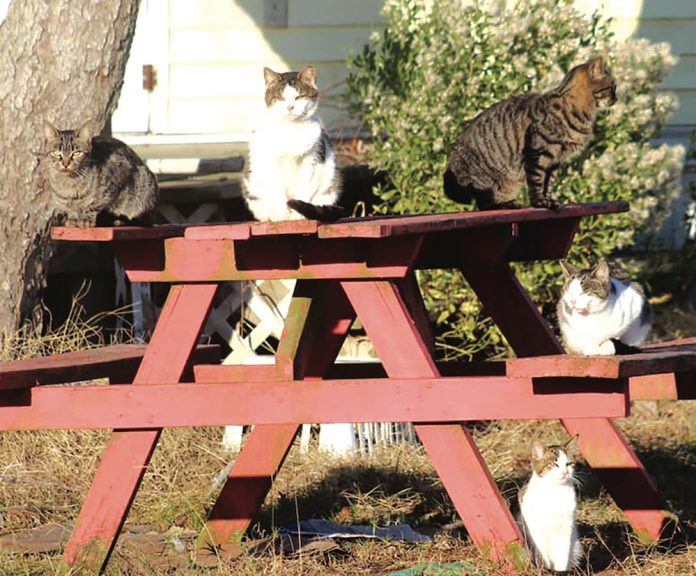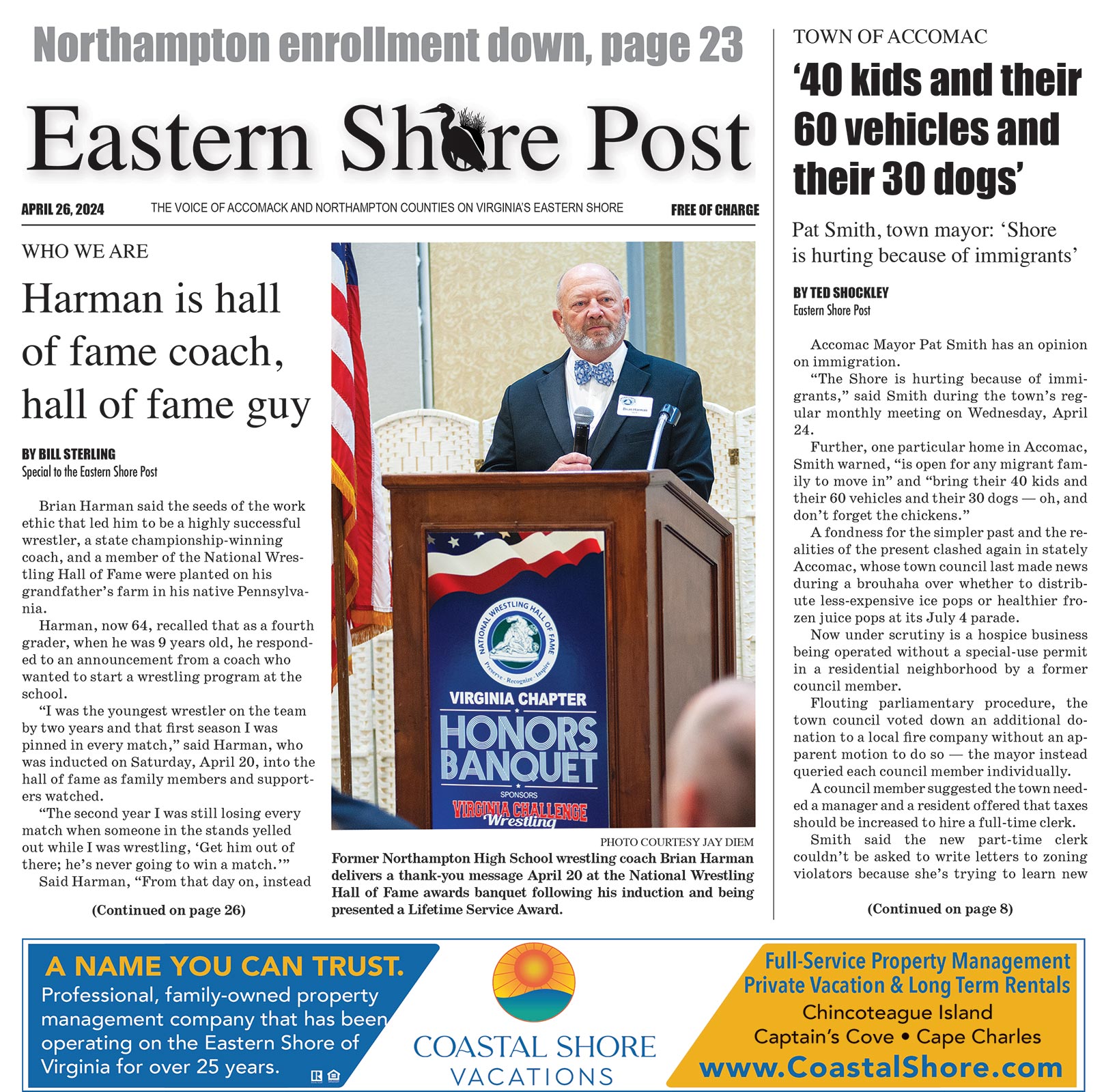Some on the island have expressed concern about the fate of upwards of 60 such cats that live in the Inlet View area, at the southern end of Chincoteague.
The developer withdrew a request for the town council to support a plan allowing for a sewer line to be installed along Main Street to serve Inlet View, after the council voted at a Sept. 19 work session to table the request until the Oct. 7 meeting.
The vote came after 22 people commented on the sewer line request at the session.
Chincoteague Town Manager James West said at the time that the developer’s attorney had withdrawn the request by letter “and asked to be removed from the agenda. No explanation was given.”
Correa said Blue Water Development “has always been and will always be an extremely pet- and animal-friendly company.”
He noted all the company’s properties are pet-friendly and said the company “regularly engage(s) in philanthropic efforts that support animal welfare,” including hosting a mural installation at the Drifting Sands Hotel last summer to support the New Jersey Osprey Project, and hosting a wreath-selling fundraiser benefiting the Worcester County Humane Society at Aloft Ocean City in December.
“Regarding the cats at Inlet View, we will take any and all appropriate steps to ensure the humane treatment of any animals that will be impacted by the redevelopment effort. This will include allowing sufficient time for the collection and relocation of all cats before the demo effort begins,” he said in a written statement.
Cats have a large territory based on location of food, water, and shelter, and it can be difficult to relocate feral cats, according to experts.
Relocating them “should only be attempted after every effort has been made to maintain the cats safely in their original territory,” according to the website www.neighborhoodcats.org
The process, to be successful, includes confining cats in their new territory for three to four weeks.
Additionally, when cats are removed from an area, it is likely new cats will then move in.
“Trapping and euthanizing is not the answer, because there is going to be a food source there. If people are feeding the cats now, if there are dumpsters, cats are going to move back into the area,” said Julie Brommer, founder of a non-profit organization dedicated to helping Chincoteague’s community cats.
A better alternative is the trap-neuter-return approach, according to animal advocacy groups including Best Friends Animal Society, among others.
Volunteers with Chincoteague Island Community Cats trapped 20 cats from Inlet View as part of its November trap-neuter-return clinic.
The cats, along with felines from other parts of Chincoteague, were neutered or spayed, vaccinated, and returned to the property from which they came, according to Brommer.
Cats that are neutered or spayed and vaccinated in the clinics are marked with an ear tip.
The Chincoteague group, which obtained its official non-profit status in November, has held four weekend trap-neuter-return clinics so far, and is planning another one June 4 through 7.
Brommer said she has a waiting list of more than 100 places on Chincoteague where community cats have been seen, mainly on the part of the island south of Maddox Boulevard down to Inlet View.
“They are part of the island,” she said.
Additional resources are needed for the trap-neuter-return effort on Chincoteague.
“We need funding, we need advertising and publicity,” Brommer said.
“We borrow all of our traps from different organizations — in November, we were able to borrow over 100 traps, which allowed us to be very successful,” she said.
Kittens eight weeks old or younger that are trapped may be adoptable, but older cats are unlikely to adapt well to domestic life, according to Brommer.
Still, if they are returned to their original territory after being neutered or spayed, they will defend it, keeping other feral cats from coming there, and at the same time will not procreate.
A model for Chincoteague to consider in order to cope with its community cats is Atlantic City, N. J., according to Brommer.
Alley Cat Allies, which also has supported the Chincoteague group with a grant, helps care for the famous community cat colonies that live outdoors along the Atlantic City Boardwalk, in a city-endorsed project.
The group since 2000 has trapped, neutered or spayed and vaccinated more than 350 cats in the boardwalk area, according to www.alleycat.org
Over time, the population has decreased by more than 72%.
Today, 89 cats in 15 colonies remain along the boardwalk, where Alley Cat Allies staff and volunteers monitor and maintain them daily.
“The Boardwalk Cats have become beloved members of the Atlantic City community, delighting residents, drawing media attention, and bringing in tourist admirers from across the nation,” according to the organization’s website.
Because Chincoteague is an island, it provides “an ideal opportunity to show that trap, neuter, and return works,” Brommer said.
Education is key, Brommer said, noting that, for example, there are ways for people who do not want cats on their property to humanely deter them, such as putting coffee grounds or citrus peels in flower beds, and using solar-powered and motion-activated devices that flash or spray water.
“They will learn; they are smart,” she said.
People who want to care for the cats can plant catnip or install an outside sand litter area to attract them to come where they are wanted.
“Chincoteague could be a place to come save the cats as well as the ponies,” Brommer said.
To donate, volunteer, or get more information about Chincoteague Island Community Cats, go to the website, www.cicommunitycats.org/



